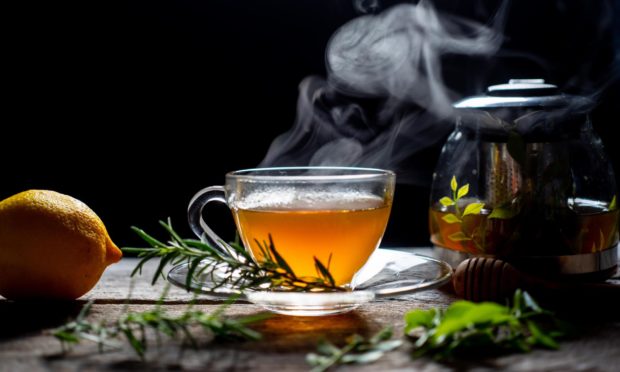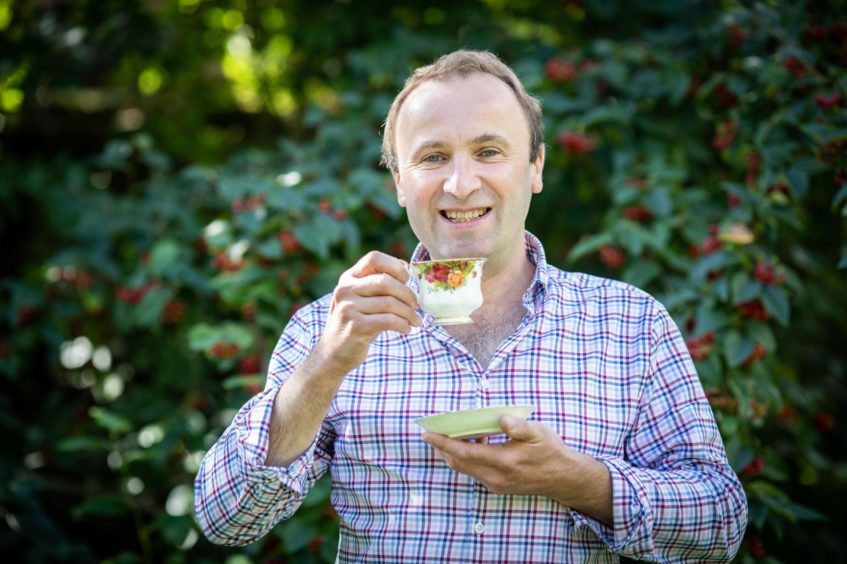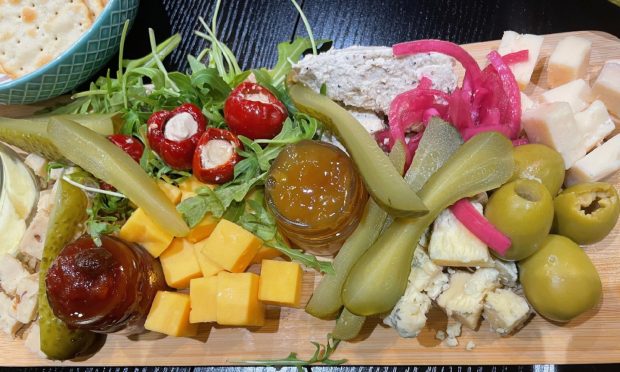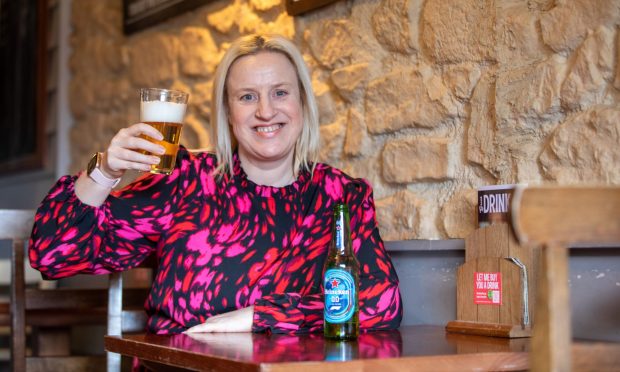A group of Scottish tea planters are on a mission to find the perfect brew that can be grown on home soil. Rebecca Shearer speaks to some of those involved in the project to find out more..
Scotland is renowned for its quality food and drink produce but, despite being a nation of tea drinkers, we’re not known for producing the product on home soil.
But this might be about to change in the not-too-distant future, particularly if a group of Scottish tea producers and scientists at Scotland’s Rural College (SRUC) have anything to do with it.
More than 40 tea producers can be found throughout Scotland and now a group of them are working together with a research team from the Rural Innovation Support Service (RISS), led by the Soil Association, to find the most profitable and highest-quality tea that can be grown on Scottish soil.
Richard Ross, chair of Tea Scotland (the Association of Scottish Tea Producers), a group of growers from across the country, is one of the tea growers on a mission to find the perfect blend right on our doorstep. He says that though tea producing may be associated with warmer climes, Scotland has very similar soil to these places and we, as a nation, have a long history with tea planting.
Richard says: “Like most people I didn’t realise it was possible to grow tea in Scotland at first… you tend to think of it being this tropical type of plant that wouldn’t thrive in our climate.
“Black tea and green tea are the two teas we’d really be looking to do. Herbal teas, though they are very nice, are a different proposition. Effectively we’re competing with the sort of teas that are now mostly grown in India, China and Kenya, which seems like an odd thing to try to emulate in windy and cold Scotland but the conditions in these places are actually quite similar to what we can produce in Scotland, as long as you get the right plants in the first place.
“There’s clearly a market for Scottish grown tea. Throughout history, there’s a really strong tradition of Scottish tea planters, and we’ve always had expertise in growing and processing tea. My own grandfather was a tea planter in Sri Lanka, and I grew up with these stories of Scots taking tea around the world. I like the idea of bringing tea home.
“It looks like there are as many as maybe 40 different growers around Scotland. Our members come from a real geographic spread – from Dumfries to Orkney, from Fife to Arran – so we’re starting to understand between us what’s possible in different parts of Scotland.”
Supported by the RISS, which helps farmers and those involved in agricultural projects across the country turn an idea into a reality, the group of tea planters will be assisted by Dr David Marshall of SRUC who will help them understand the genetic diversity of the tea varieties they are growing – but he conceded that the pandemic has thrown timescales into question.
He said: “It’s been delayed at the moment, simply because we can’t do lab work, though it’s really just a fact of life just now. But it allows us to give extra time, planning and thought to the research, so it isn’t crucial in terms of what we might want to do. It’s not a major issue at present but could be if it’s delayed much longer.
“There are two aspects in terms of what we’re hoping to do. One is that we are hoping to analyse what the tea growers here already have and we’ve been speaking to people who know a lot about tea internationally and we might be able to source material from them that’s maybe better adapted to the Scottish climate.
“We are also working with the horticultural department at SRUC about the prospect of using tea for student projects and for them to be able to look at tea propogation under Scottish conditions.
“Tea grows in a much wider range of places than people actually realise and there are some parts of the world, such as Nepal or Georgia, where tea is grown under conditions that are much cooler than you’d expect. Tea tends to be grown in relatively mountainous areas and the tea growers in Scotland have actually so far grown it under some quite extreme conditions – it’s been quite happy when winters have gone down to around -8°C.”
Richard added: “There isn’t a timeline on the research anymore as everything’s been extended this year, though we were hoping to move a bit quicker. It’s difficult to put a timescale on it exactly. All the things we are doing with tea at the moment are quite slow-burning because the plant is taking longer than we thought to get established so we’re playing a longer game than we intended to at the start.”
Quality is the name of the game, says Richard, who highlights the fact that the kind of tea the group are looking to grow won’t be as mass market as the Tetleys of the world and is more likely to be a premium product.

He says: “It’s always going to be a boutique, small-scale production as we’ll never be able to compete with the big names for two reasons; it’s the quality end of the market we’re aiming for because we’re looking to make more of a premium product, and in terms of scalability we just wouldn’t be able to achieve that volume. You’re never going to see half of Aberdeenshire turning into tea fields, for example.
“It’s always going to be a niche industry and, for that reason, it’s got to be at the quality end of the spectrum – a loose leaf, handmade tea rather than the more industrial tea that you might get in your average tea bag.
“We are all at the very early stages of this as nobody in Scotland has had their plants for more than about five or six years really and most of them for far less than that.”
As some of Scotland’s growers specialise in black tea, others in green tea, all of the different varieties will be considered in this new research to find which has the most potential.
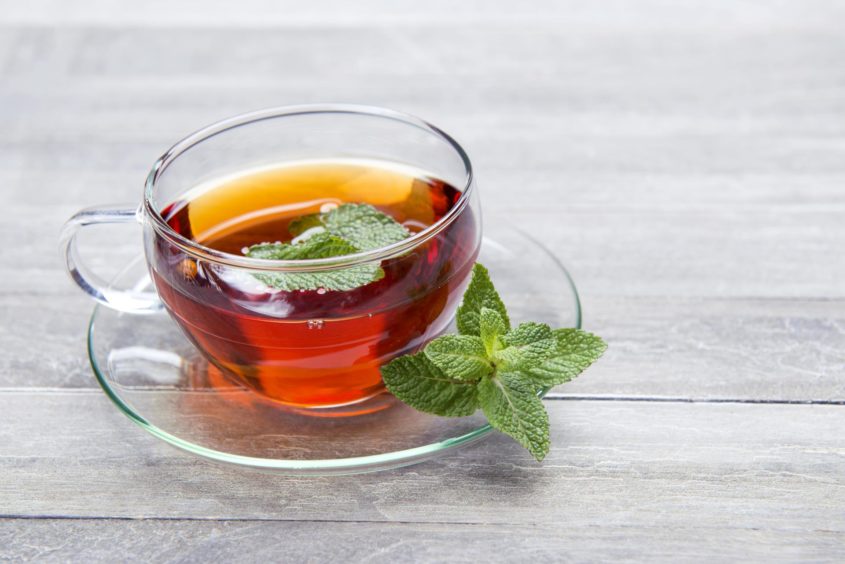
Richard says: “There are two ends of the process – the plants that we grow have to be well-suited to the weather and growing conditions in Scotland. But from the same plant you can turn that into black tea, green tea, oolong – all these main branches of tea all come effectively from the same plant.
“Once we’ve got the right plant material in Scotland, there’s still a lot of scope for choosing what to do with that. Some growers are more interested in the black tea side of things, some are more interested in green tea and others are maybe interested in oolong and different styles.
“All these things are possible and the research project is really looking more at the agricultural side of it and making sure we have the right kind of material. It’s all still in the very early stages of development, however.
“What ends up on the shelf is more down to the individual grower and what they choose to grow, as well as the area of tea they want to go into.”
The group is being facilitated by Alastair Trail of SAC Consulting, part of SRUC, who was appointed by RISS to help both Richard and David see the project through.
He says: “The RISS project has been set up to encourage collaboration between farmers, landowners and foresters etc with outside support from academia and the private sector to do research that will benefit the wider industry. As part of that, the RISS project supplies a facilitator whose role is to bring groups together and understand what their issues are and link them to people who can support them and help them carry out their innovate research.
“My role is to do that for Tea Scotland and David Marshall. We also have other things happening with a team at SRUC with horticulture department students potentially doing some projects for the group as well. The main plan as well, which has probably been delayed because of Covid but is something for further down the line, is SRUC having some trials of growing tea.
“It’s about understanding exactly what tea we’ve got and using that information in a scientific way to grow it better. In the long term, we’d like to optimise the growing conditions in Scotland to find the most economical approach.”
